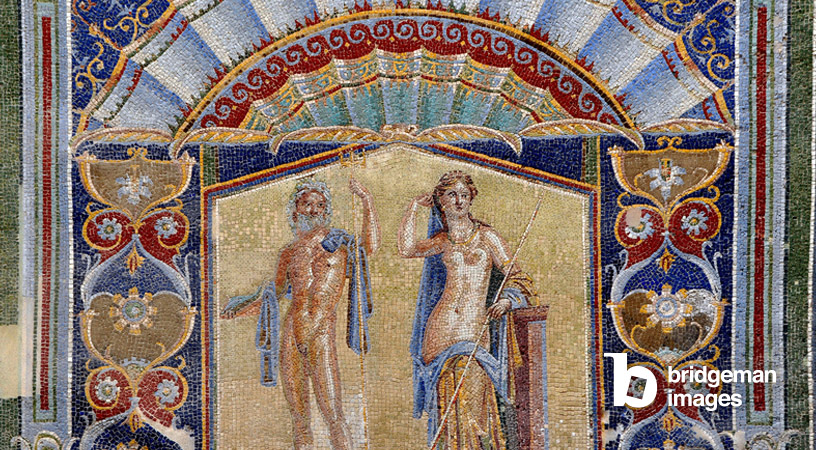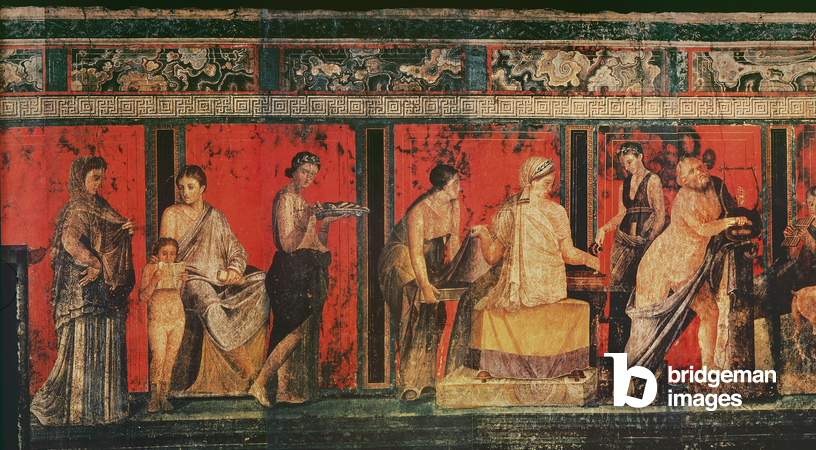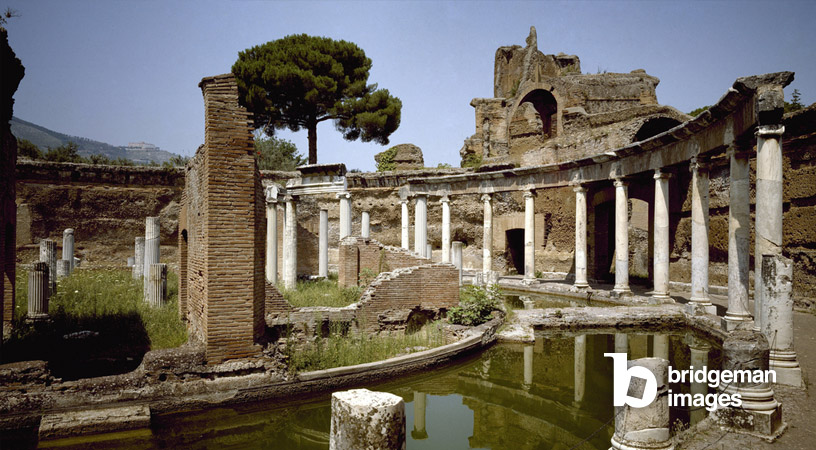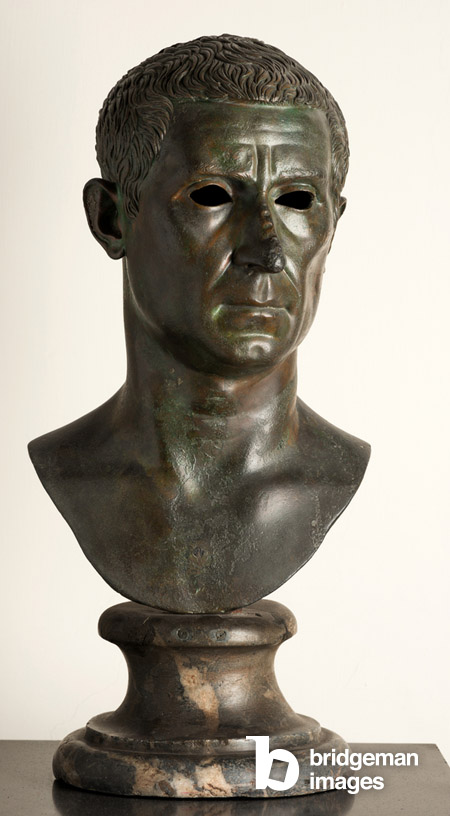Published 02/08/2023
Deeply ingrained in Western consciousness is the legacy of ancient Rome. Standing as a testament to the power, ingenuity, and artistic spirit of an illustrious civilization are its artworks - timelessly mesmerizing, teeming with life and history. Let's unravel together the intricacies and splendor of ancient roman art.
View our selection of Ancient Roman Art.
Introduction to Ancient Roman Art
Ancient Roman art tells the tale of a society that continuously evolved over centuries, influencing and being influenced by peoples they conquered or interacted with. Their artwork carries codes from different cultures — like Etruscan, Greek, Egyptian – harmoniously blended to create something uniquely 'Roman.' It is a reflection not just of their aesthetic sense but also societal norms, political ups-and-downs and their deep-seated religious beliefs.
Historical Context of Ancient Rome
Taking into account the vast expanse that encompasses ancient Rome’s timeline (circa 753 BC to 476 AD), we can recognize how changes in historical context have introduced new styles in arts. Ranging across kingdoms, republics, and empires whose influences extended from Gaul art in northwestern Europe to regions of the Roman Empire closer to Africa. The constant influx from exchanges led to many shifts in trends and preferences throughout those periods - resulting consequently in various phases within ancient art in Rome.
The Significance And Impact Of Ancient Roman Art
The impact and significance of ancient Roman art sprouts from multiple facets: socially it showcases lifestyle; politically it glorifies important figures; architecturally it reflects grandeur; culturally it reverberates myths & customs.
Leading patrons usually commissioned artworks for specific purposes like honoring heroes (famous ancient Roma sculptures), gods (artifacts depicting deities ), adorning public buildings (Roman empire artwork) or personal villas (paintings in ancient Rome). In essence, these artistic creations provide us not only aesthetic pleasure but also a comprehensive understanding of Roman life, giving voice to their past and reverberating their story onto the present.
The sheer variety, complexity, and captivating nature of ancient roman art have left deep imprints on artistic endeavors through centuries. This makes it a fascinating arena for both—invesigative study and awed admiration.

Types of Ancient Roman Art
There's a myriad of artistic expressions that fall under the umbrella of ancient Roman art. As we delve deeper into this topic, there's much to admire and learn about the unique techniques and styles used in every form—from sculptures to paintings to mosaics.
Sculpture in Ancient Rome:
When it comes to the art from Rome, one can't help but mention their exceptional contributions in the field of sculpture. Recognized for its imposing grandeur and realism, Roman sculpture offers glimpses into both the public and personal life in ancient Rome.
Statues and Busts of Prominent Figures
Within ancient roman artifact collections, you'll frequently find statues and busts representing reputed figures. These are often realistic portrayals; a potent illustration of artists' fascination with individual human emotion. Notable entities like Julius Caesar or Augustus were commonly immortalized as larger-than-life bronze or marble masterpieces.
Major Styles and Influences In Sculpture
Drawing influences from Greek prototypes earlier, the Romans imbued their sculptures with a distinct layer of classicism—what is known today as Classical Roman tArt or Gaul Art. Whilst gifted with intricate detailing borrowed from their Hellenistic counterparts, these renowned artist Romans were remarkable for bringing forth an alluring sense of naturalism in their works.
Painting in Ancient Rome:
Unearthing the vibrant realm of Roman painters takes us beyond mere sculptures — introducing us to richly colored frescoes and themes steeped deeply within mythology and daily life routines.
Frescoes And Murals
Perhaps the most recognized examples of ancient art in Rome come alive through mesmerizing wall frescoes found on properties such as palaces or residential villas. Vivid depictions involving mythological tales, landscapes, still lifes constitute a significant part here, outlining an everyday narrative mixed impeccably with imaginative fables.
Subject Matter And Themes In Roman Painting
Roman paintings encompassed themes which ranged from religious to secular. More popular depictions included Dionysian mysteries, marine scenes, garden vistas, along with those reflecting significant historical events.
Mosaics in Ancient Rome:
The realm of mosaics within Roman empire artwork is captivating as it framed the everyday life within intricate tesserae (mosaic pieces) making an indelible impact on ancient art forms.
Techniques and Materials Used In Mosaics
Mosaic creation involved careful placement of small stones or glass on floors, walls, and ceilings—a labor-intensive process bearing fruit to a brilliant display of visual intricacies. A noteworthy example of this fascinating technique was its incorporation within the dolphin chariot mounts found across different regions of the roman empire.
Examples Of Famous Roman Mosaic Artworks
A few remarkable instances such include the enticing geometric patterns at Baths of Caracalla or bewitching images that adorn Villa Romana Del Casale’s floors—a UNESCO World Heritage site today. Lets not forget about the iconic "Alexander mosaic" though; illustrating Alexander The Great in battle against Darius III—another memorable glimpse into the world of ancient Roman art.
View our selection of mosaics and frescos from Pompeii.

Ancient Roman Art
Key Characteristics and Techniques in Ancient Roman Art
When it comes down to studying the art of the Romans, one can't ignore some key characteristics and techniques that defined their creations.
Naturalism and Portraiture in Roman Sculptures
Ancient Rome sculptures hold a unique place in the broader spectrum of world art. A dominant aspect of these works was its vivid representation of naturalism. Unlike many other cultures known for creating idealistic representations, Romans embraced the innate qualities of real life scenarios and gave primary focus on portraying physical details accurately. Many artefacts revealed aged faces with receding hair lines, furrowed brows, and distinguished expressions – standing testament to this characteristic feature.
Moreover, portraiture represented another significant element within Roman sculpture practice. They were successful pioneers in capturing intricate facial features, expressions, and individual identities - an innovative move quite alien to previous empires invested only in depicting gods or mythical figures aesthetically.
Architecture and Engineering Innovations
Roman Empire artwork was not merely confined within engravings or elaborate frescoes; instead it also encompassed grand architectural masterpieces showcasing unmatched skills of engineering innovations.
A memorable trait evident among their structures was the usage of arches encapsulating detailed carvings. The triumphal arch was such popular structures often built to commemorate military victories but eventually turned into artistic marvels because of their highly decorative nature.
Additionally, Romans developed a distinct variety of concrete using volcanic ash.This material had greater structural strength allowing them to design larger buildings evidencing significant architectural excellence that we still marvel at today for their meticulous planning and execution like Colosseum or Pantheon. Let's not forget the ancient aqueducts which are fine examples demonstrating this lightweight yet durable construction innovation from Rome.
Vibrant Use of Color in Paintings and Mosaics
Paintings in ancient Rome commanded a rich palette presenting vibrant hues that introduced higher degrees of realism as well as symbolic attributes. From the azure skies to ivory skin tones, painters laid heavy emphasis on details thereby amplifying the depth of any scene and delivering an immersive experience.
The practice of using bright, contrasting colors extended into their mosaics work too. Mosaic - a prominent art form in Rome depicted various subjects including mythological tales, landscape scenes, and domestic life depicting a pictorial narrative. The artists exploited miniature glass-pieces or tesserae tinted in diverse shades for creating these visual narratives that were far from being monochrome but rather ignited an explosion of lively pigments.
The classical roman art thus was not merely about static replications, instead it breathed life into characters with its unimaginable precision and authenticity; crafted majestic architectures evidencing advanced engineering brilliance; and weaved alluring visuals using radiant color spectrums across media — truly encompassing the extraordinary vibrancy and dynamism of a civilization far ahead of its times.

Significant Artists and Masterpieces of Ancient Roman Art
Greek Influence on Roman Artists
The art of the Romans owes an immense debt to Hellenistic Greece. The ancient Greeks had significant influence on the style, subject matter, and techniques used in Roman artwork. By imitating Greek artistic principles, Romans created a unique flavor of classical art that stands as a testament to their appreciation for Greek culture.
For example, consider prominent masterpieces of sculpture from ancient Rome. Many pieces echo the depth, verisimilitude, and sophistication seen in Greek statues. Roman artists have managed to embrace these graceful aesthetics while adding their signature spin - a testament to the vital role of Greek influence in shaping classical Roman art.
Works by Notable Roman Sculptors
Let's delve further into several famous ancient Rome sculptures that were produced under the robust imprint. For instance, an artist roman, known by his name Myron from Eleutherae made a seminal contribution with his celebrated statue 'Discobolus or Disc Thrower', showcasing an athlete mid-action during a discus throw. Though crafted centuries ago, it still has breath-taking realism that almost makes you feel the palpable tension in his muscle structures.
Another compelling figure within this realm is Phidias whose colossal statues of Zeus and Athena garnered widespread renown across regions of the roman empire. Riding on striking intricate detailing and unprecedented scale alone, they represent one among many innovations introduced by notable roman sculptors during this era.
Similarly revered was Praxiteles', who revolutionized freestanding nude sculptures with works like 'Aphrodite of Knidos' – a prime example embodying Roman fascination towards human anatomy while pushing its artistic boundaries towards explicit yet tasteful representation.
Achievements 0f Prominent Painters in Ancient Rome
Despite scant architectural remains offering scarce evidence about paintings in ancient Rome, several sources distinctly highlight profound achievements within this domain. The remnants of Pompeii provide a snapshot into the rich, dynamic tapestry that defined Roman painters and their work.
Among them was Fabullus, lauded for his ability to drape the 'Fourth Style' around his frescos with an aura of mystic grandeur. His splendid depiction of the frieze in Domus Aurea is held up as a pinnacle of ancient art in Rome - an ode to the deepest wells of human imagination.
Pictor has also etched his name onto history's canvas with significant contribution towards mural paintings during early Roman republic – breathing life into historical records through vivid artistic narratives whilst inching closer towards placing within one among many other admired Roman empire artwork.
Undoubtedly, these trailblazing artists have played an integral role not just enriching Rome's art scene but also laying foundations for future generations. Consequently, they prove the potency lying beneath their canvas to influence worldwide cultural directions while heightening appreciation towards ancient roman art.
Whether through the chisel guiding monumental sculptures or brushes sweeping across intricate murals, we find ourselves stepping inside a portal transporting us back several centuries – introducing us to notable individuals who initiated paradigm shifts within different aspects of arts all those years ago. Listen closely enough, you might just catch echoes from past civilizations through their relics today!
Patronage and Purpose of Ancient Roman Art
One essential aspect to understand when exploring ancient Roman art is the role of patronage. No different from other eras or cultures, creating art in ancient Rome often required financial support. Artists found this support predominantly through three avenues: royal and noble patrons, religious institutions, and political bodies.
Royal and Noble Patronage of Art in Ancient Rome
From opulent villa decorations to physical adornments like jewelry, the ancient art in Rome was frequently funded by affluent Romans. The emperors themselves were known for their love of arts, with many acting as patrons to various artists. Vestiges of roman empire artwork obtained this way are still discernible today in artifacts excavated throughout diverse regions of the roman empire.
Nobles were also keen on preserving their illustrious family legacies through commissioned busts and statues crafted by credited Roman sculptors. These timeless pieces don't only amplify our understanding of famous ancient Rome sculptures; they also reveal insights into fashion trends and ideals held during that time.
The commissions weren't merely a display of vanity or wealth. They served a higher purpose—channeling societal norms, ethical standards, philistine preference changes—and ultimately helped shape classical Roman art as we know it.
Religious and Mythological Significance in Roman Art
Ancient Rome’s rich pantheon offers further inspiration for its artists, visualizing gods' stories on an array of mediums—from temple friezes to small household objects meant as offerings at altars . Tied inevitably with religion were elements borrowed from myths, legends and symbolic motifs representing revered creatures like dolphins (partially enlightened by the discovery of items such as dolphin chariot mount).
Through these expressions spread across province rome territories, we discover how profoundly religion underpinned society's functioning during that time - from rituals invoking divine favor to paying homage to deified emperors posthumously.
Propaganda and Political Messages Conveyed through Art
At its core, much of Roman art was inherently political. Emperors and politicians routinely used it as a means to relay propaganda, subtly instilling their viewpoints into the populace's subconscious.
For example, many public works commissioned by leaders purposefully represented them in a divine light or surrounded by symbolic elements, thereby conferring upon themselves an air of superiority and legitimacy. In doing so, they manipulated Roman artwork as steadfast affirmation of their authority—artistic exercises aiming at elevating individual stature above all.
A careful study of ancient roman artifacts testifies this clever intertwining of politics with artistic expression—an effective maneuver to maintain control over diverse rome provinces and shore up loyalty amongst citizens.
Through these varying themes underscored within Ancient Roman art—be it royal patronage, divination or political tool—we unlock a historic tapestry full of fascinating angles that lends itself deeper than being just visual beauty; It provides us valuable snapshots into intrinsic societal structures prevalent in one of history's most advanced civilizations.

Impact and Legacy of Ancient Roman Art
The art of the Romans, tuned with extraordinary refinement and depth, offers us a compelling standpoint to view the past. Ancient Rome's artistic contributions played an enduring role in shaping Western culture. Even today we can witness its lasting influence on later European artistic traditions along with its remarkable focus on preservation efforts.
Influence on Later European Art Movements
Ancient Roman art has remarkably intertwined itself into the fiber of successive European artistic movements. Among these influences can be noted Renaissance's return to classical ideals, Baroque's dramatic expressivity, and Neoclassicism’s renewed fascination with Antiquity.
Renowned for their detailed sculptures, stoic portraiture, ingenious architecture and vibrant mosaics, Roman artists brought forth a multitude of styles and techniques that continue to inform modern design principles. For instance, Michelangelo's majestic Sistine Chapel ceiling owes much to ancient frescoes from Rome.
This reminds me of Raphael's acclaimed "School of Athens" mural portraying famous philosophers- another profound homage to classical Roman art.
Preservation and Restoration Efforts for Roman Artworks
Roman artifacts have had their share of vulnerability over time. However, valiant attempts by archeologists and historians towards preserving this rich heritage yielded significant results in conserving many renowned masterpieces.
One such example is the Dolphin chariot mount artifact discovered by archaeologists in Leicester City Centre which was painstakingly restored highlighting meticulous care invested in preserving Rome's legacy.
Continuous advancements in technology are also aiding restoration tasks like 3D modeling rightfully restoring disintegrated parts of wall paints binding back glimpses from centuries ago.
These proactive measures play pivotal roles in ensuring Rome’s ancient landmarks yield historic insights rather than succumbing entirely to inevitable wear and tear.
Tourism And The Preservation Of Ancient Sites
Tourism holds a dual-edged sword relation towards the preservation of ancient sites. On one hand it boosts recognition attention towards antiquated landmarks, while on the other hand it risks wear upon the remnants of history.
Responsible tourism can support preservation attempts financially with proceeds allocated towards architectural renovations maintaining the integrity of this precious legacy. Sites like Colosseum or Pantheon are classic examples.
In conclusion, Ancient Roman Art perpetuates its influence over eons because of its timeless qualities and resilient endurance. The past echoes in present through these tangible fragments each narrating an antique tale underlining our deeply entwined historical narratives.

Conclusion: Why Ancient Roman Art Continues to Fascinate Us
The enduring appeal of ancient Rome in popular culture
In our contemporary world, there's an unmistakable allure attached to the art of the Romans. This could be attributed to its remarkable craftsmanship, thematic diversity and historical significance. Ancient Rome pops up in many aspects of popular culture—movies, books, video games—it is difficult for anyone not to come across elements of this grand civilization.
Ancient paintings and statues are replicated, concepts from roman sculpture have been adapted into modern design trends, further raising interest towards Rome's artwork. A clear example is seen in major Hollywood movies such as Gladiator and HBO television series like Rome; they pay homage to this magnificent era by recreating elements drawn from classical Roman art with acute attention to detail.
Film directors aren't the only ones hypnotized by the aesthetics of this period—music artists too have taken references from ancient Roman imagery for their album covers or song themes. Even the world of fashion isnít immune to its charm; runway shows frequently showcase collections inspired by iconic styles found in paintings or sculptures from ancient Rome.
This continuing fascination prompts a deeper dive into understanding how these past societies functioned culturally and artistically—a testament to Rome’s timeless appeal that remains potent even today.
Lessons and insights we can learn from Ancient Roman art
Art doesn’t exist in a bubble—it reflects society, history, politics and beliefs among others. As such, there are considerable lessons we can garner examining ancient Roman artifact.
Primarily reflecting social hierarchy and political power structures prevalent at their time of creation, famous ancient Rome sculptures express universality in human emotion through precise capturing of facial expressions - a sentimental thread connecting us with distant history.
Further delving within layers reveals complex nuances related during antiquity – where mythology intertwined with everyday life resulting beautiful works heavily permeated with such mythological elements—giving invaluable insights about religious practices and supernatural beliefs of that society.
Even on the geopolitical front, Roman empire artwork embodies more than just artistry—it serves as a visual record of region expansion, providing crucial context about various conquered provinces reflected in their art. Evidence is shown through influxes of unique styles borrowed from these acquired regions into native works, signifying Rome's vast reach at it's prominent stature.
Tying this together implies that Ancient Roman Art offers not only aesthetically pleasing experience but an introspective journey through time standing testament to human creativity and ambition throughout history—valuable lessons for us to admire and absorb. It's no wonder why the artistic prowess displayed in ancient Roman artifacts continues to resonate deeply with us today.
View our selection of Ancient Roman Art.
Get in touch with our team; we are always delighted to assist you in your research, with no obligation or additional cost.


